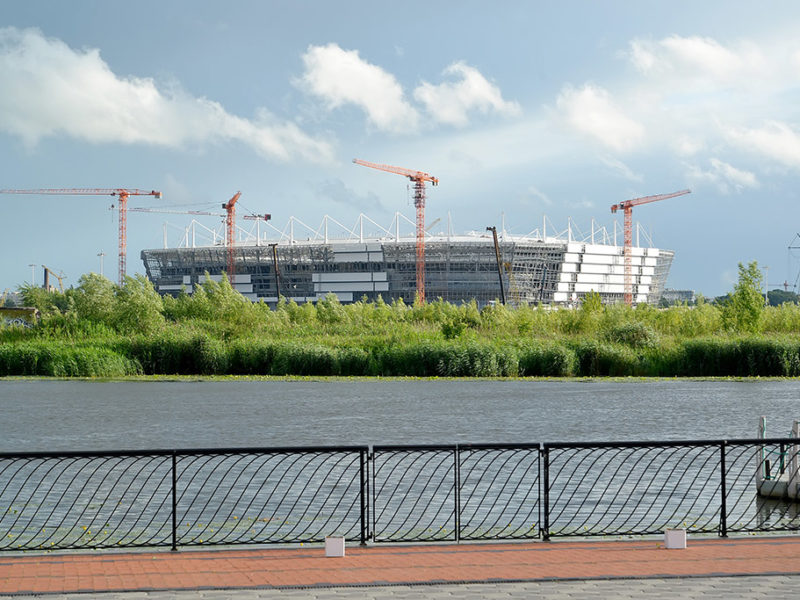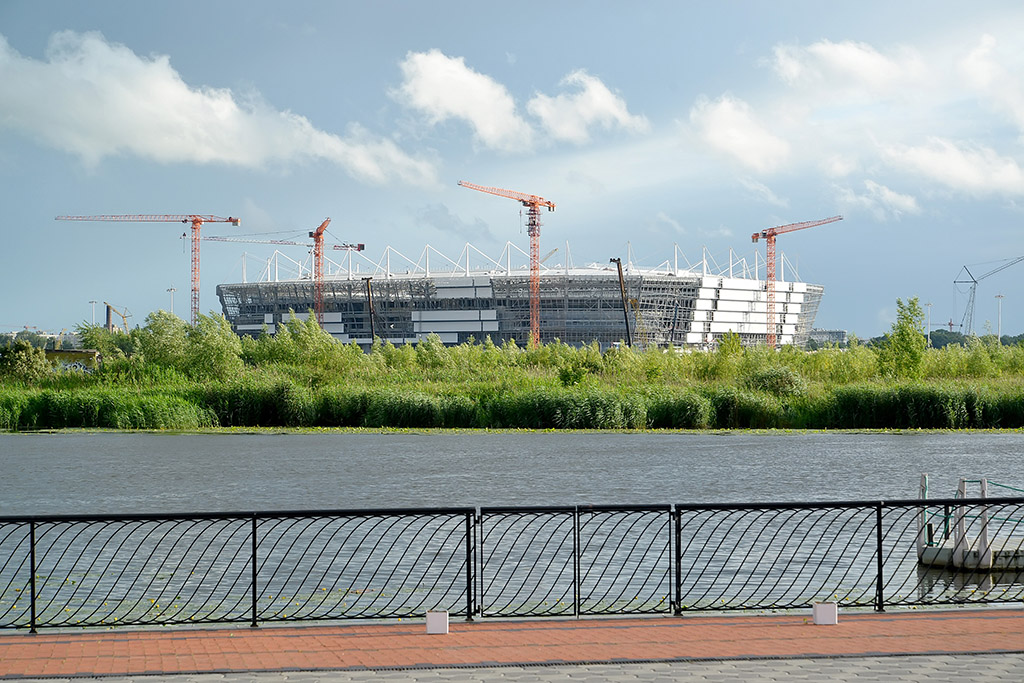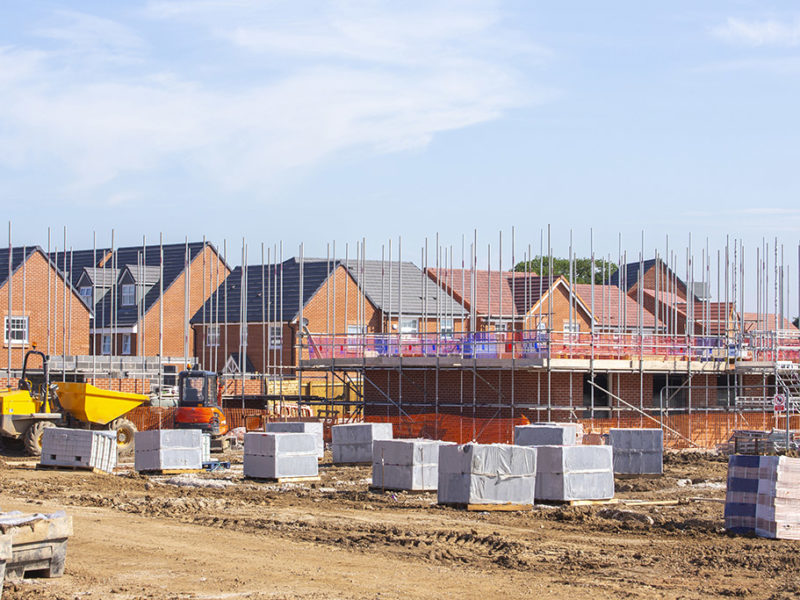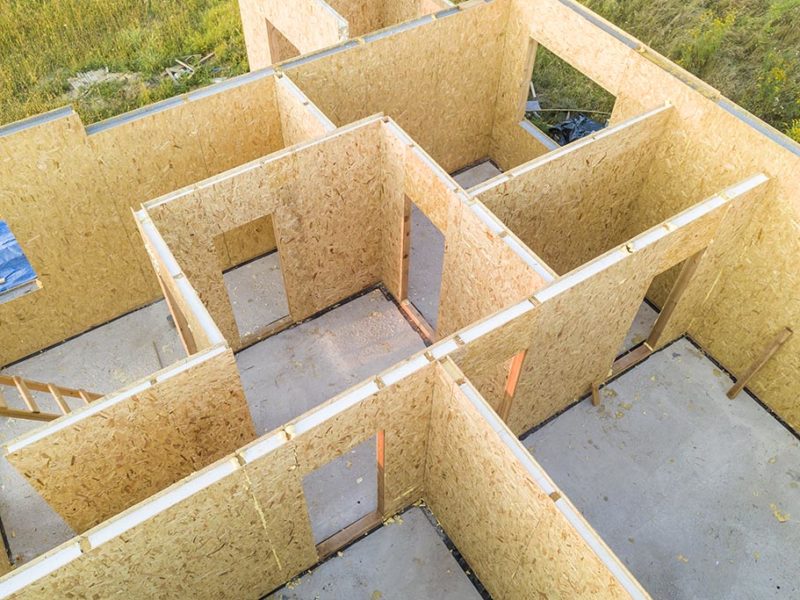Construction in the Sports Sector Report – UK 2017-2021
Available as an Instant Download PDF
The report reviews the market in four sectors; professional sports, semi-pro & amateur sports clubs, leisure & sports centres and schools & college sports.
£700.00 Exc. VAT
The 1st edition of the ‘Construction in the Sports Sector Report – UK 2017-2021 Analysis‘ reviews the market in the UK for sports construction focusing on projects in four sectors; professional sports, semi-professional & amateur sports clubs, leisure & sports centres and schools & college sports facilities. The report is based on original research and analysis using planning and project data allied to detailed investigation into longer term development and investment plans.
Key issues covered:
- Review of sports construction activity 2011-2017 – contractors output and key drivers e.g. trends in match attendances, review of income streams, trends in sports & fitness participation and related incentives/campaigns.
- Professional sports – sports infrastructure covering football – Premier League in particular – also rugby union, cricket and horseracing, construction activity and drivers.
- Leisure & sports centres – overview of sports infrastructure, construction activity and drivers, trends include budget gyms, trampoline parks.
- Education establishments -sports infrastructure, Construction activity and drivers.
- Semi-professional & amateur sports clubs – sports infrastructure covering mainly football also rugby union, golf. Construction activity and drivers e.g. participation.
Key areas of insight include:
- Professional sports – driven by renewed investment in football club stadium re-developments and expansion, due to growth in broadcast revenues and increasing attendances.
- Leisure & sports centres – a main area of activity has been local authority leisure centres but other sectors include budget gyms and trampolining parks.
- Education – schools and colleges are a major market for sports construction, both newbuild and stand-alone facilities e.g. sports halls pavilions/changing rooms and pitches.
- Detailed review of income streams e.g. broadcasting rights, National Lottery funding, Exchequer funding etc.
- Key contractors within the sports construction sector including market share estimates.
- Detailed market data and insight on the sports construction market by Barbour ABI, a leading UK provider of construction market intelligence.
Some of the companies included:
Balfour Beatty, Willmott Dixon, Buckingham Group, ISG Group, Sir Robert McAlpine, Morgan Sindall, Kier Group and Bowmer & Kirkland etc.
Review of sports construction market size and structure
- Definition of the market, also Market size – contractors output 2012 -2016, forecasts 2017 to 2021 and identification of key drivers.
- Review of key market influences – attendances at spectator sports (overall and by main sports e.g. football, rugby, cricket, horseracing); sports participation trends; broadcast rights revenues for professional sports – mix by main sectors e.g. Premier League, horseracing, EFL Championship; trends in National Lottery funding for sports; trends in Exchequer funding for sports.
Professional sports
- Overview of infrastructure – football and rugby leagues: number of clubs, average stadium capacities.
- Market size & trends – contractors output 2012-2016, forecasts 2017 to 2021; identification of key drivers e.g. legacy of Olympic Games, football investment, new broadcast rights deals for cricket.
- Market mix by contractors output – Olympics & Commonwealth games, football, rugby, cricket, horseracing and other. Highlights key developments e.g. Anfield, Etihad stadium.
- Market prospects – highlights major developments in the construction pipeline e.g. new stadiums for Chelsea & Everton and several Championship clubs e.g. Brentford, Bristol Rovers.
Semi-professional, amateur and recreational sports clubs
- Overview of infrastructure – football and rugby leagues: number of clubs, average stadium capacities.
- Market size & trends- contractors output 2012 -2016, forecasts 2017 to 2021; identification of key drivers e.g. trends in club membership by types of sport.
- Market mix by contractors output – mix by types of client e.g. local authorities, multi-sports clubs and the different types of main sports clubs i.e. football, rugby, cricket and golf.
Sports & leisure centres
- Overview of infrastructure – local authority, fitness club chains and independents.
- Market size & trends – contractors output 2012 -2016, forecasts 2017 to 2021; identification of key drivers e.g. trampolining parks, impact of growth in budget gyms.
- Market mix by contractors output – leisure centres, fitness clubs, lidos etc & trampoline parks.
Schools, colleges and university sports facilities
- Overview of infrastructure – numbers of sports halls, pitches and swimming pools.
- Market size & trends – contractors output 2012-2016, forecasts 2017 – 2021; key drivers.
- Market mix by contractors output – new schools, stand-alone new sports halls, pavilions, pools.
Contractor review
- Market shares for top contractors and output for others over the 2012-2017 period.
- Summary reviews of key contractors and identification of main sectors serviced and major projects undertaken.
Within the context of this report, the sports construction market comprises four main sectors: professional sports; semi-professional & amateur sports clubs; leisure & sports centres (including gyms and fitness clubs) and education establishments, these mainly being secondary schools. Contractors’ output peaked in 2011, largely because of the 2012 London Olympics construction programme, and annual output within the sports sector has yet to reach those heights again. Over the 2014-2016 period, the professional sports sector accounted for around a third of total contractors output.
The sports construction market improved in 2016 and 2017, driven by renewed growth in stadium construction output, mainly for a few Premier League and EFL Championship clubs. Going forward, output is expected to increase, largely due to major football stadium re-developments including the ongoing re-development of White Hart Lane and prospective major schemes for Chelsea and Everton. Outside football, other sectors expected to sustain demand include county cricket, leisure centres and school sports facilities.
- Contents Listing
- 1. INTRODUCTION 7
- 1.1 BACKGROUND 7
- 1.2 SOURCES OF INFORMATION 7
- 2. SUMMARY 9
- 2.1 SUMMARY 9
- 3. ECONOMIC ENVIRONMENT 12
- 3.1 GDP 12
- 3.2 INFLATION & INTEREST RATES 13
- 3.3 UNEMPLOYMENT 14
- 3.4 HOUSEHOLD CONSUMPTION 15
- 3.5 HOUSING & CONSTRUCTION 15
- 3.6 STERLING 16
- 3.7 POPULATION PROFILE 16
- 3.8 CONCLUSIONS 17
- 4. ENTERTAINMENT & LEISURE CONSTRUCTION MARKET 18
- 4.1 INTRODUCTION AND DEFINITION 18
- 4.2 STRUCTURE 19
- 4.3 CONSTRUCTION NEW WORK OUTPUT 19
- 5. SPORTS CONSTRUCTION MARKET 22
- 5.1 DEFINITION 22
- 5.2 MARKET OVERVIEW AND FORECASTS 22
- 5.3 KEY DRIVERS AND INFLUENCES 25
- 5.3.1 Attendances at Professional /Spectator Sports 25
- 5.3.2 General Public Sports Activity/Participation 26
- 5.3.3 Broadcast Rights & Other Private Sector Funding for Professional Sports 27
- 5.3.4 National Lottery Funding for Sports Programmes 28
- 5.3.5 Government Funding for Sports Participation Programmes 30
- 6. PROFESSIONAL SPORTS 32
- 6.1 DEFINITION 32
- 6.2 OVERVIEW OF PROFESSIONAL SPORTS 32
- 6.2.1 Association Football 32
- 6.2.2 Other Sports 33
- 6.2.3 National Centres 34
- 6.3 CONSTRUCTION ACTIVITY 2010-2017 35
- 6.4 MARKET PROSPECTS 37
- 6.4.1 Football 37
- 7. SEMI-PROFESSIONAL, AMATEUR AND RECREATIONAL SPORTS CLUBS 40
- 7.1 INTRODUCTION 40
- 7.1.1 Football 40
- 7.1.2 Rugby Union 42
- 7.2 OVERVIEW OF SEMI-PROFESSIONAL, AMATEUR AND RECREATIONAL SPORTS CLUB PARTICIPATION 42
- 7.3 SEMI-PROFESSIONAL, AMATEUR AND RECREATIONAL SPORTS FACILITIES CONSTRUCTION OUTPUT 44
- 8. SPORTS AND LEISURE FACILITIES 47
- 8.1 DEFINITION 47
- 8.2 MARKET STRUCTURE 47
- 8.2.1 Overview 47
- 8.3 SPORT AND LEISURE FACILITIES CONSTRUCTION OUTPUT 48
- 8.3.1 Leisure and Sports Centres 498.3.2 Private Fitness Clubs /Gyms 50
- 8.3.3 Other Including Trampolining Centres and Stand-Alone Pools 50
- 9. SCHOOLS AND HEI SPORT AND LESIURE FACILITIES 52
- 9.1 INTRODUCTION 52
- 9.2 EDUCATION SPORTS FACILITIES CONSTRUCTION OUTPUT 53
- 10. CONTRACTORS 56
- 10.1 MARKET SHARE 56
- CHART 1: SPORTS FACILITIES CONSTRUCTION OUTPUT £M 2012 -2021 9
- CHART 2: UK LEISURE & ENTERTAINMENT REVENUES BY SECTOR 2016 10
- TABLE 3: GDP DATA – 2015-2017 – KEY CONSTITUENT ELEMENTS 12
- CHART 4: INTEREST RATES AND INFLATION (CPI) FROM 2000-2021 14
- CHART 5: PDI & SAVINGS RATIO AT CURRENT PRICES 2000-2021 15
- TABLE 6: EXCHANGE RATE FLUCTUATIONS 2013-2019 – STERLING TO THE DOLLAR, AND THE EURO, SPOT RATES 16
- CHART 7: UK LEISURE & ENTERTAINMENT REVENUES BY SECTOR 2008, 2013, 2016 19
- CHART 8: ENTERTAINMENT AND LEISURE CONSTRUCTION CONTRACTORS OUTPUT AND FORECASTS BY VALUE (£BN AT CURRENT PRICES) 2012 – 2016 20
- CHART 9: SPORTS FACILITIES CONSTRUCTION OUTPUT £M 2011 -2021 23
- CHART 10: SPORTS FACILITIES CONSTRUCTION OUTPUT BY MAIN SECTORS 2016 24
- CHART 11: SPECTATOR SPORTS IN THE UK – ATTENDANCES 2016, TOTAL 70 MILLION 25
- CHART 12: ONCE A WEEK SPORTS PARTICIPATION LEVELS IN ENGLAND 2005-2006 AND 2014-2016 26
- CHART 13: ENGLAND MAIN SPECTATOR SPORTS REVENUES 2016 TOTAL £6 BILLION 27
- CHART 14: NATIONAL LOTTERY AWARDS FOR SPORTS SCHEMES 2011 -2016 28
- CHART 15: NATIONAL LOTTERY FUNDING 2010 -2016 BREAKDOWN BY RECIPIENT 29
- CHART 16: EXCHEQUER FUNDING FOR SPORT £M 2010/11 – 2017/18 30
- CHART 17: EXCHEQUER FUNDING 2010 -2016 BREAKDOWN BY RECIPIENT 31
- TABLE 18: GB PROFESSIONAL FOOTBALL LEAGUES -NUMBER OF CLUBS AND RANGES OF STADIUM/GROUND CAPACITIES 32
- TABLE 19: RUGBY UNION & RUGBY LEAGUES NUMBER OF CLUBS AND STADIUM MEDIAN CAPACITIES 33
- TABLE 20: UK MAJOR RACECOURSES AND STADIUM CAPACITIES 34
- CHART 21: PROFESSIONAL SPORTS FACILITIES CONSTRUCTION OUTPUT £M 2010 -2021 35
- CHART 22: UK PROFESSIONAL SPORTS FACILITIES CONSTRUCTION BY SPORTS BY CONTRACTORS OUTPUT 2011-2017 36
- TABLE 23: MAJOR FOOTBALL CONSTRUCTION PROJECTS IN THE DEVELOPMENT PIPELINE FROM 2017 38
- TABLE 24: MAIN DIVISIONS OF SEMI-PROFESSIONAL NON-LEAGUE FOOTBALL IN BRITAIN -NUMBER OF CLUBS AND MEDIAN STADIUM CAPACITIES 41
- TABLE 25: MAIN DIVISIONS OF SEMI-PROFESSIONAL RUGBY UNION AND IN BRITAIN -NUMBER OF CLUBS AND MEDIAN STADIA CAPACITIES 42
- TABLE 26: SEMI-PROFESSIONAL, AMATEUR & RECREATIONAL SPORTS CLUB MEMBERSHIP BY SPORTS TYPE BY MEMBER NUMBERS 43
- CHART 27: UK SEMI-PROFESSIONAL, AMATEUR & RECREATIONAL SPORTS FACILITIES CONSTRUCTION OUTPUT 2011 – 2021 44
- CHART 28: MEMBERSHIP TRENDS AMONG MAJOR RECREATIONAL SPORTS WITH FACILITIES (E.G. PITCHES, COURTS, CLUBHOUSES/PAVILIONS ETC) 2010/11 -2015/16 45
- CHART 29: SEMI-PROFESSIONAL, AMATEUR AND RECREATIONAL SPORTS CLUBS CONSTRUCTION OUTPUT 2011-2017 MIX BY TYPES OF CLIENT 45
- CHART 30: MARKET MIX BY NUMBER OF CLUBS – PUBLIC/PRIVATE – 2016 (%) 47
- CHART 31: UK SPORTS & LEISURE FACILITIES CONSTRUCTION OUTPUT 2011 – 2021 48
- CHART 32: SPORTS & LEISURE CENTRE CONSTRUCTION OUTPUT BY MAIN SEGMENTS 2014 -2016 49
- TABLE 33: UK SCHOOLS BY TYPE AND NUMBER AT JANUARY 2017 52
- CHART 34: UK SCHOOL & HEI SPORTS FACILITIES CONSTRUCTION OUTPUT 2011 – 2021 54
- CHART 35: SCHOOL SPORTS FACILITIES CONSTRUCTION OUTPUT BY MAIN SEGMENT 2014 -2016 55
- CHART 36: SPORTS FACILITIES PROJECTS UNDERTAKEN 2012 -2017 APPROXIMATE SHARES BY CONTRACTORS OUTPUT 56

Paired Report Discount
Save £250 for every two reports you buy
Discount applied in basket
Frequently bought together

Trusted by industry leaders
For more detailed requests speak to our research experts directly
By using this form you agree that your data will be processed and protected in line with our Privacy Policy.
Research you can depend on
Our reports go deeper to give you the insights needed to make your next strategic move.
- Detailed assessment of the market – analysis of the market structure and recent developments within the market.
- Market prospects up to 4 years – market value, opportunities, impact of Covid-19, Brexit etc.
- Detailed information – market size, influences, market factors and key players.
- Analysis by product group – market size, product mix, sector trends etc.








